To have a successful website, you need to find ways to maximize your conversions.
Right now, you might think the layout of your site has an optimal design, but how can you know for sure?
The only way to figure this out is to test it. This isn’t something you just do once and forget about it.
You need to learn how to use continuous A/B testing to increase your conversions.
These tests are a great opportunity for you to make design choices that ultimately result in revenue.
Subtle changes, e.g., moving your CTA button or changing the color scheme on your site, can make a huge difference.
In the past, I’ve explained everything you need to know before you start A/B testing.
But now I want to take that concept one step further. I’ll show you the best tools for you to use for A/B testing.
That’s because these tests are not created equally. Depending on the size of your business, marketing goals, and technical experience, some tools will be more beneficial for you compared to others.
Regardless of your situation, I suggest you review my list of the top 13 tools for A/B testing. I’m confident you’ll find a solution in this guide that will benefit your business.
1. Google Optimize
It’s tough to put out a list of software solutions like this without starting with Google. All of its tools are great for business owners who manage websites on their own.
Google Optimize is no different.
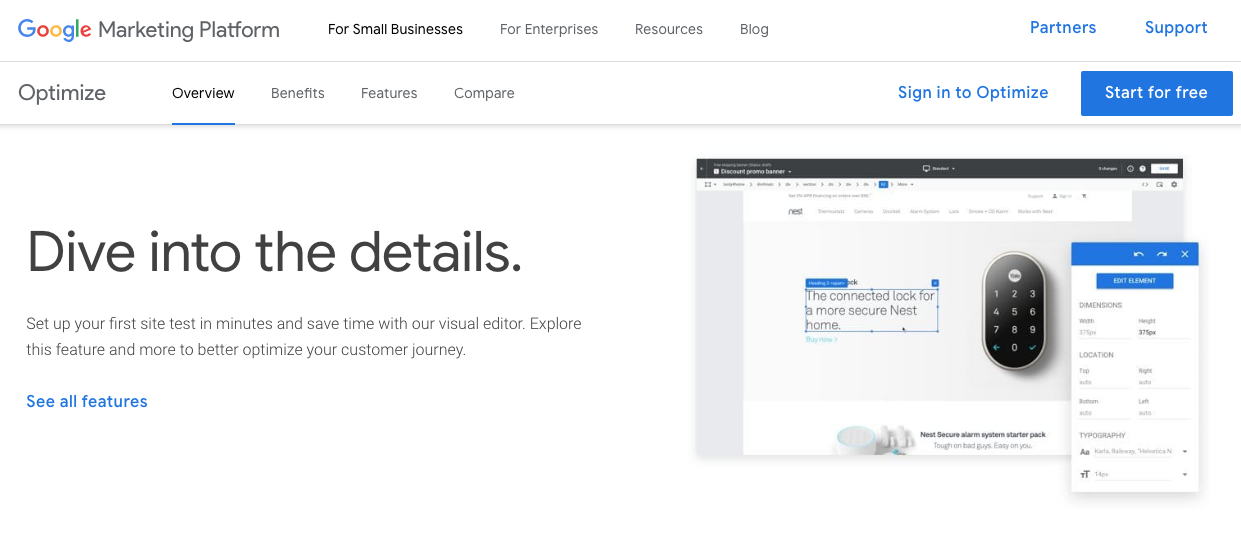
This tool should be a top choice for you to consider because it has native integration functionality with your Google Analytics profile.
This gives you an edge because you already have information on record about how visitors behave on your website. Using this data will make it easier for you to prioritize what needs to be tested first.
Another benefit of Google Optimize is it’s free.
The visual editor is simple for anyone to figure out, regardless of their technical experience.
In addition to Google Analytics, this tool can also be integrated with Google AdWords and Firebase.
You can test mobile features and optimize your mobile website for Google searches.
2. Optimizely
Optimizely is one of the most popular options. They are definitely a market leader when it comes to A/B testing software.
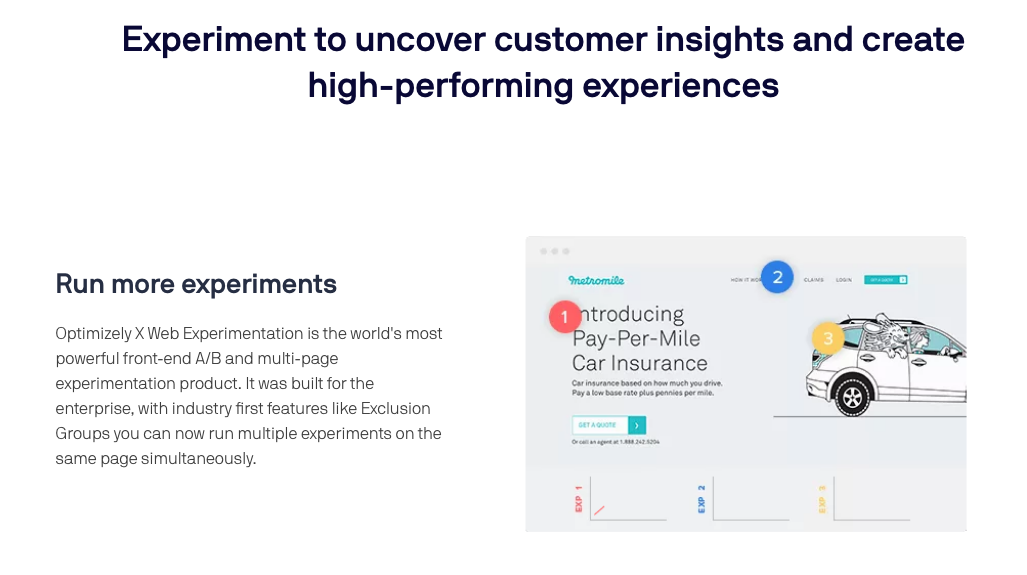
The tools on this platform let you run lots of different experiments on your website.
These experiments allow you to focus on A/B testing and personalization.
One of the highlights that makes Optimizely stand out in the crowd is its ability to run A/B tests on multiple pages and platforms simultaneously.
For example, you can run tests on your homepage and contact page while also testing the shopping cart on your mobile site on Android and iOS devices.
Unlike other tools, Optimizely generates results that are easy to read and comprehend so you can make decisions based on the outcome.
With Optimizely, you can run A/B tests on a number of factors outside of obvious components, like a CTA button. You can run tests on:
- cookies
- geography
- ads
- audience segments
All of this information will give you a competitive advantage and maximize your conversion rates.
3. Apptimize
Just as the name suggests, Apptimize is made for running A/B tests on mobile apps.
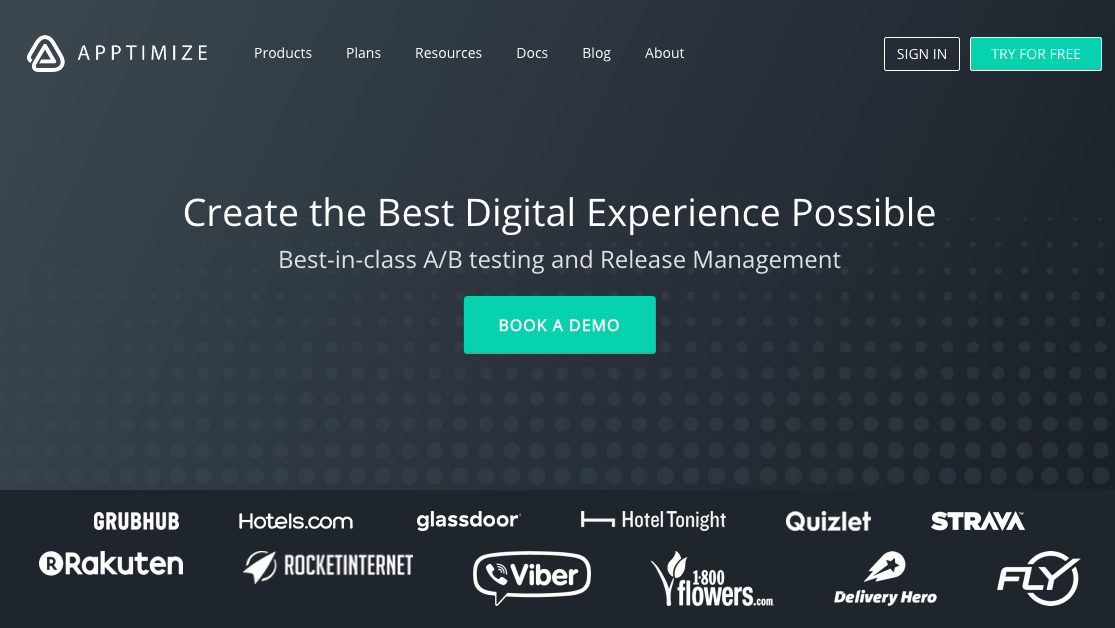
This is the ultimate tool if you want to improve the profitability of your small business mobile app.
All too often I see businesses ignoring mobile users. You were one of the smart ones that catered to their needs and developed a mobile app.
But the development process isn’t over when your app launches. It’s imperative that you always strive to make improvements on your platform.
Mobile app conversions are just as important as those from your desktop and mobile sites. With Apptimize, you can run tests on all three of these.
The software also supports different code blocks:
- Objective-C
- Java
- React Native
- Swift
- Xamarin
You can run tests on your app regardless of the code used for development.
4. AB Tasty
AB Tasty is a great option for businesses just starting to run A/B tests and focusing on conversion rate optimization (CRO).
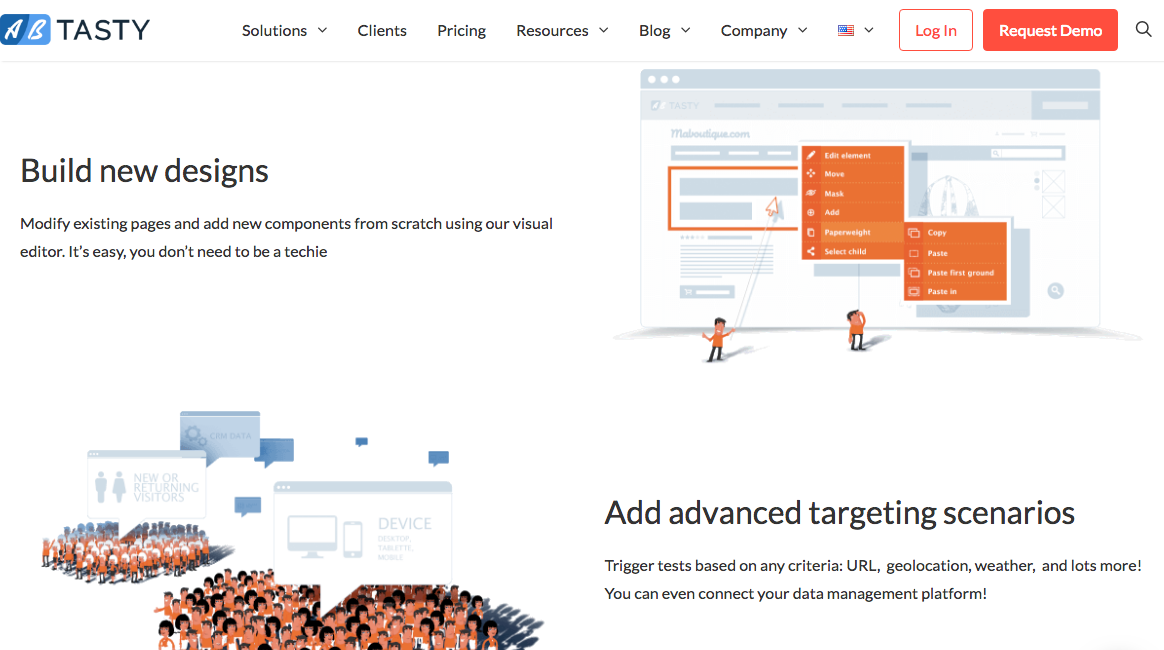
Since it’s designed for beginners, the pricing options are really affordable.
AB Tasty offers different options for testing. You can test two or more variations of a single element on your site, such as CTA placement, images, or colors.
You can also do split testing.
This feature lets you build two separate landing pages to see which one converts more.
Its multivariate option allows users to run combinations of tests simultaneously.
You can also take advantage of the funnel testing feature. This lets you test changes of the user experience as visitors navigate through each step of the conversion funnel on your site.
5. Convert
If you have a small or medium sized business, Convert has great A/B testing solutions for you.

It’s meant for people focusing on optimizing their websites in-house.
It’s ideal for these types of business owners because it’s easy to use. Part of what makes the navigation so simple is the drag and drop features.
You can use Convert’s software for A/B tests, multivariate tests, and split tests as well.
They make it easy for you to integrate and onboard your content management system and Google analytics data.
This allows you to focus on personalization. You can build customer profiles by using this software.
Another reason why Convert is so popular is because it has an outstanding customer support team to help you answer any questions if you’re having trouble with the software. It’s easy to reach a representative through the platform’s live chat option.
6. Adobe Target
Another one of my favorite options is Adobe Target.
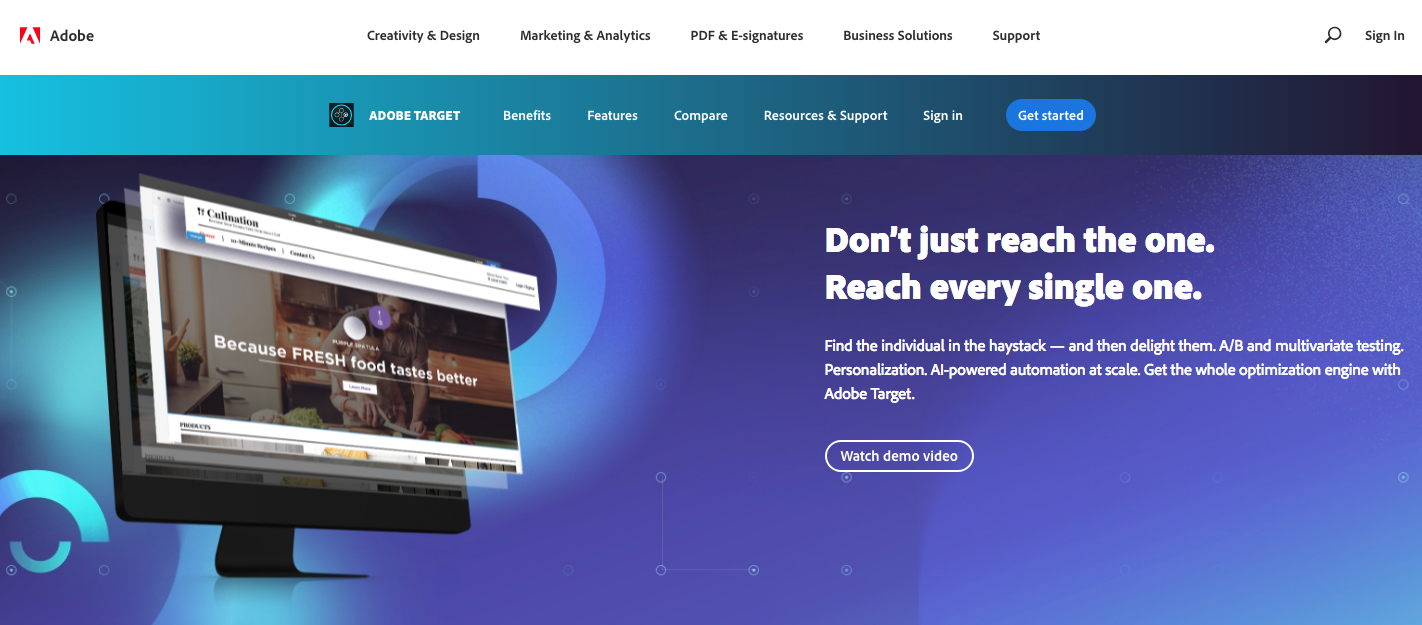
When you use this platform, you’ll go through a workflow process that has three steps.
First, you’ll determine the variation you want to test.
Next, you’ll decide how you’re going to segment that variation with your visitors.
The final step is to customize all your settings and set a goal for the experiment.
Automated personalization is one of the top features available on Adobe Target.
This tool has an algorithm that automatically makes changes based on visitor behavior to optimize your results. It will help you increase sales by personalizing the customer experience.
You can run tests based on how different visitors experience your site.
7. Kameleoon
Kameleoon uses artificial intelligence to power its personalization tools.
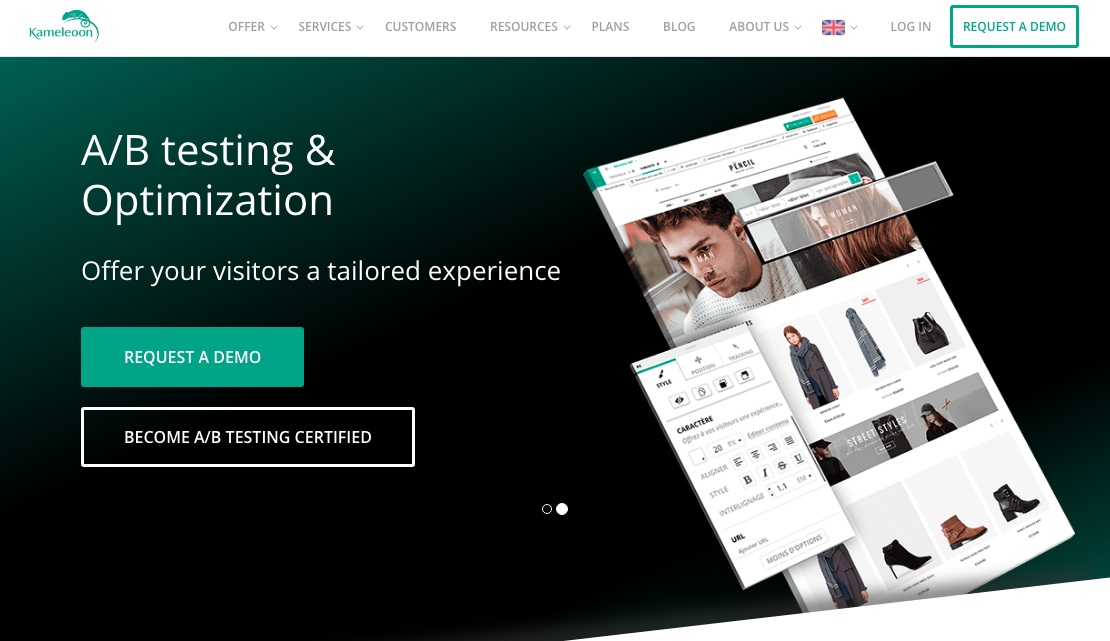
The AI makes it an advanced platform. I wouldn’t recommend it if you are just starting A/B testing on your website.
It’s better for those looking to test deeper elements of their sites.
The reports generate user insights with the navigation analysis tool.
Kameleoon lets you test multiple user segments with more than 40 different benchmarks for targeting, such as:
- lead management
- engagement with visitors
- conversions
- social proof
- customer loyalty
- reactivating old customers
These are all examples of experiments you can run with Kameleoon’s advanced software.
All of the data is updated in real time. There’s no need for you to wait for a report to get generated to see your results.
8. Conductrics
Conductrics is another great tool designed for business owners who want to focus on their mobile sites.
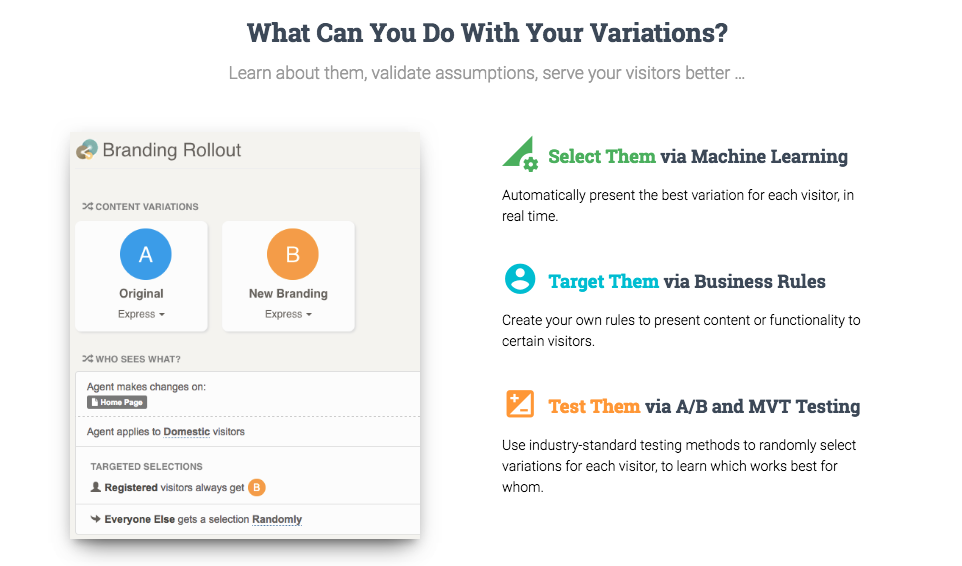
In addition to your mobile site, you can also test features on your mobile app.
Conductrics lets you focus on things, such as:
- widgets
- navigation
- upgrades
- discounts
You can use this platform in different ways. It offers Conductrics Express, designed for the everyday user, without a technology background.
No coding is required to use Conductrics Express. You can change elements of your site with a visual tool directly on your pages.
But it also offers a more advanced option made for developers. This makes it easy for developers to integrate tests with apps, websites, and processes.
The developer option uses AI machine learning to set parameters and conduct an in-depth analysis.
9. SiteSpect
SiteSpect is another tool designed for people who are more technologically advanced. If you’re a beginner, I wouldn’t start with this software.
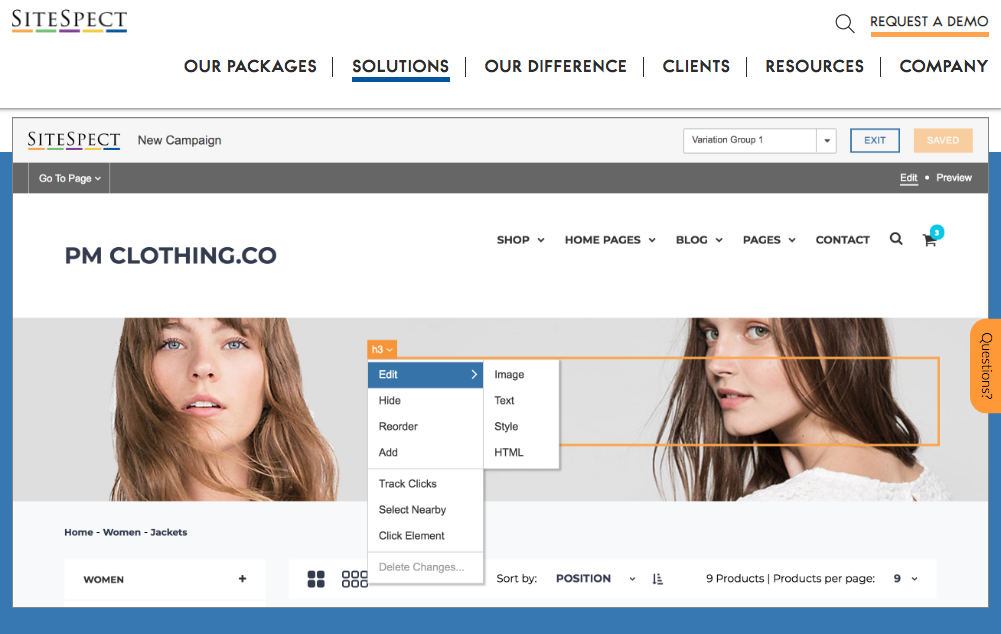
This platform gives you the option to edit the HTML before it departs from the server.
The ability to do this makes SiteSpect a popular choice for brands that self-host their websites. It’s also great for businesses that prioritize security.
SiteSpect has a visual editing tool. This is a common option for A/B testing as you’ve seen so far.
However, the biggest difference between this tool and others is the ability for you to access your website from both the client and server sides, which ultimately gives you a better understanding of the user experience.
10. Oracle Maxymiser
Oracle Maxymiser has a visual editor—similarly to other options I’ve talked about.
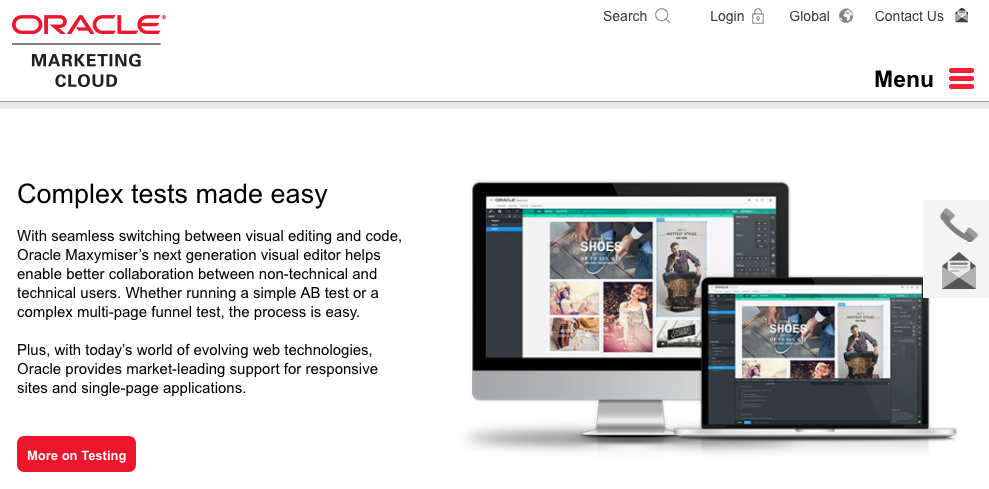
Use this software to set up variations and run basic tests.
In addition to the simple functions of this software, it also has coding features for more advanced testing.
These functions are ideal for targeting and personalization tests. You can target your most profitable customer segments, and the Oracle Maxymiser tool will automatically build a customer profile.
The profiles are based on data and behavior from each unique visitor who navigates to your website.
11. SiteGainer
In addition to standard A/B testing, SiteGainer gives you other options to help you with conversion rate optimization.
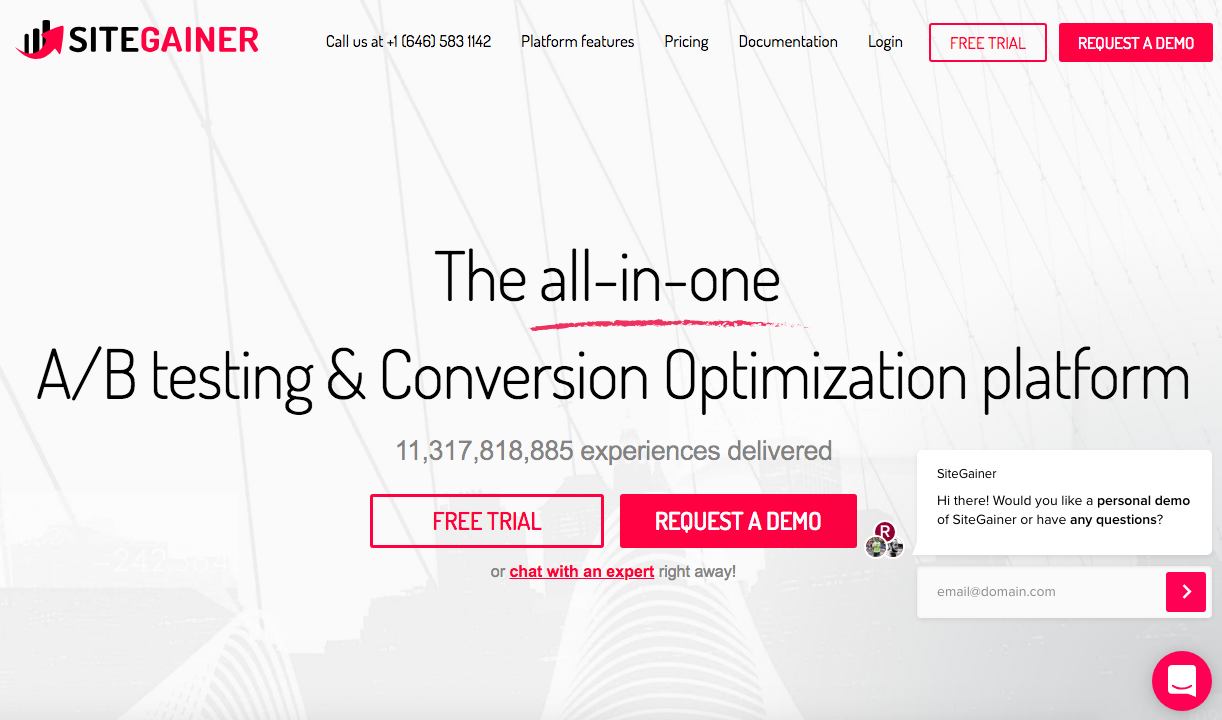
Some of its other tools include:
- personalization features
- surveys
- popup windows
- heat maps
These can help you improve your website, especially when you use A/B tests to maximize its efficiency.
It’s easy for anyone to use SiteGainer, regardless of their experience level.
Another benefit of this software is that it offers a free trial, so you can try it before committing.
Instead of flat rates, it offers prices based on things such as your monthly traffic and how often you want to pay, so you’ll have options for your budget. Basically, you only pay for what you use.
12. Sentient Ascend
If you’re looking for something different, consider Sentient Ascend.
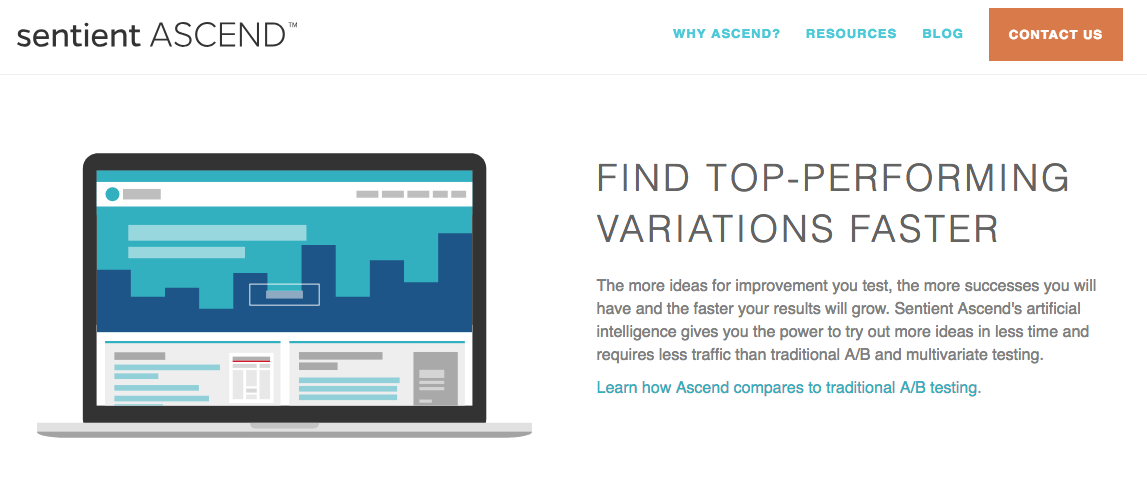
It’s different because it uses conversion optimization paired with algorithms for machine learning.
I know this sounds a bit complex, but let me explain how it works.
Basically, these algorithms are written to find the most optimal combination of design elements on your website. The tool allows you to test multiple variants at the same time to see which performs the best.
As a result, you’ll learn the best way to design your pages for conversions.
13. Monetate
Last, but certainly not least, is Monetate.
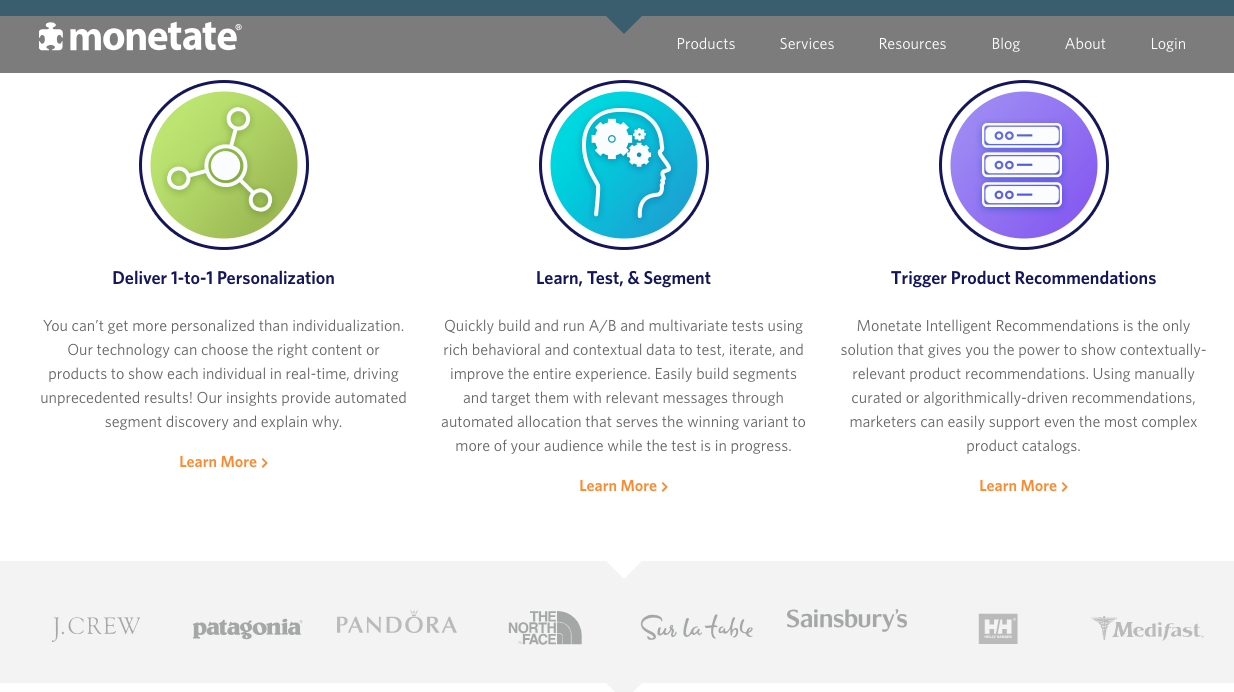
In addition to A/B testing, Monetate offers multivariate tests, segmenting tools, and personalization tools.
The software adjusts how your site traffic is allocated to maximize the return on your investment.
One of my favorite features of this tool is that it helps you determine what needs to be tested on your website based on your goals. The results help limit false positives so you can know for sure the reasoning for your changes was accurate.
Conclusion
A/B testing is a great way to maximize conversions on your website. I highly recommend every website to take advantage of this strategy.
That said, you need to make sure you find a tool that’s best for your business and your individual circumstances.
Are you looking only to run A/B tests? There are certain platforms for you.
If features like split tests, multivariate tests, funnel tests, and simultaneous testing are important to you, you must find software that has these options.
If you want to test your mobile site and mobile app as well, look for those specific tools I highlighted above.
Certain tools are for beginners, while others are designed for developers and users with a technical background and coding experience.
No matter what your circumstances are, if you use this guide as a reference, I’m sure you’ll be able to find a tool for A/B testing that works for you.
What types of A/B tests are you running on your website to increase conversions?
